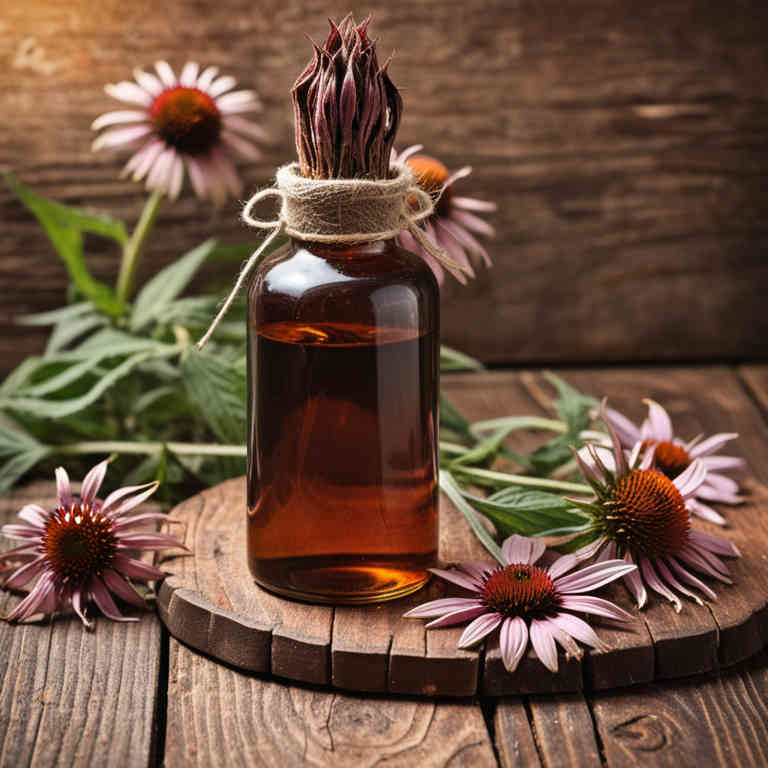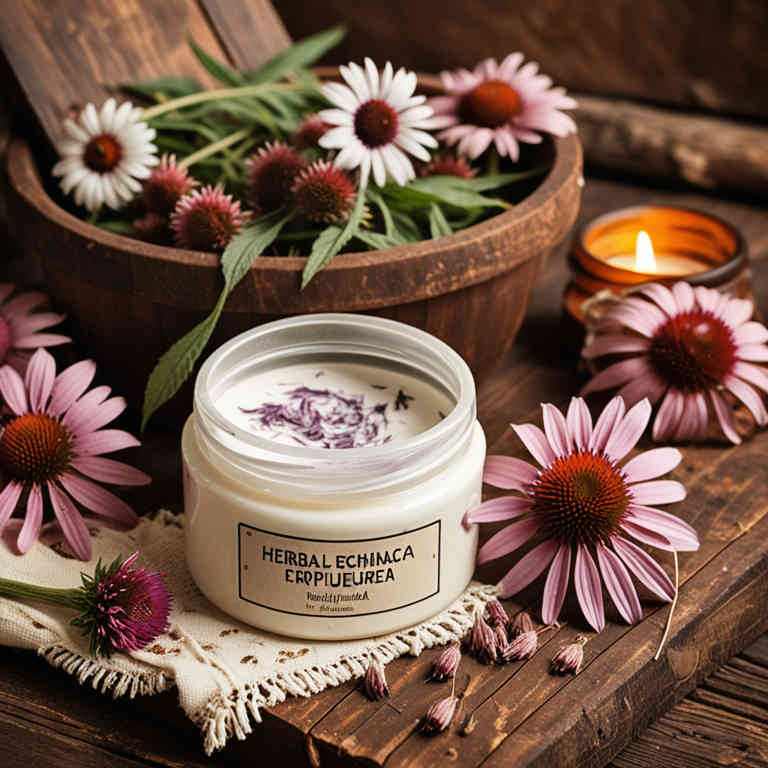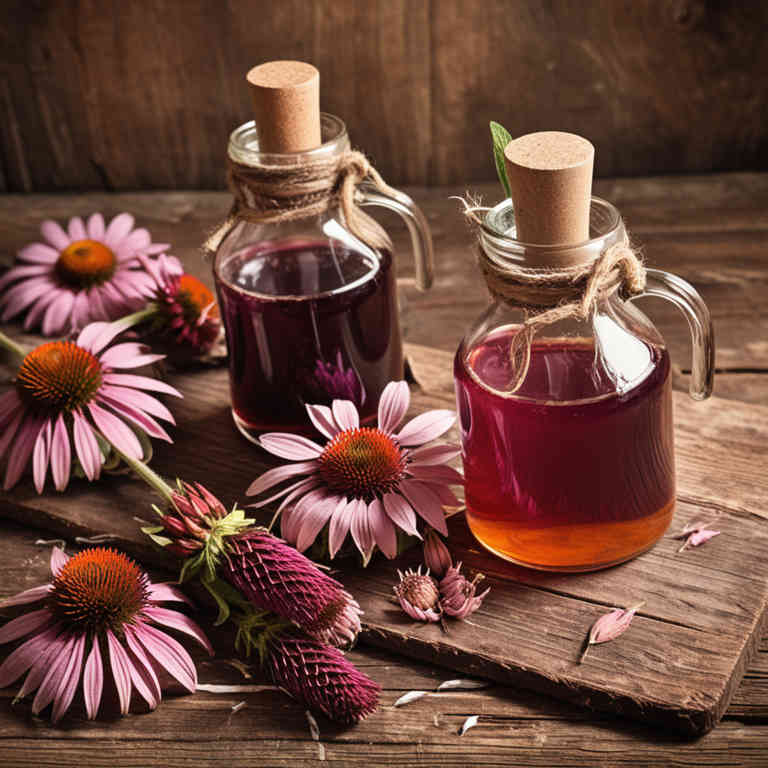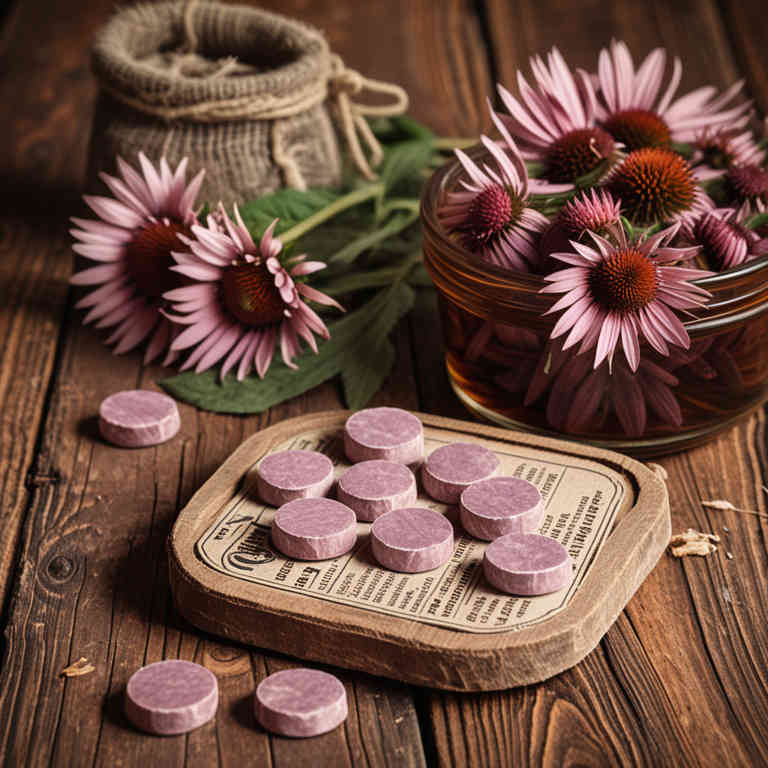10 Best Echinacea Purpurea Preparations

The best medicinal preparations of Echinacea purpurea are teas, decoctions, tinctures, capsules, and creams, each offering unique benefits for immune support and inflammation reduction.
Teas and decoctions are made by steeping the dried roots or leaves in hot water, while tinctures involve alcohol extraction for concentrated potency.
Capsules provide a convenient oral dosage, and creams are applied topically to treat skin conditions.
These preparations have been traditionally used to alleviate cold symptoms and boost the immune system.
Their effectiveness is attributed to active compounds like alkamides and polysaccharides.
Below there's a list of the 10 best herbal preparations of echinacea purpurea for medicinal purposes.
1. Teas
Echinacea purpurea teas is commonly used to boost the immune system and alleviate symptoms of colds and respiratory infections.
This herbal preparation is often consumed at the first sign of illness to prevent the progression of viral infections. The most common medicinal uses include treating sore throats, coughs, and mild flu-like symptoms. Bioactive constituents such as alkamides, caffeic acid derivatives, and polysaccharides are believed to contribute to its immune-stimulating and anti-inflammatory properties.
These compounds may help enhance the body's natural defenses and reduce the duration of certain illnesses.

2. Decoctions
Echinacea purpurea decoctions is commonly used to support immune function and treat respiratory and skin infections.
These decoctions are often employed to alleviate symptoms of the common cold, influenza, and upper respiratory tract infections. They are also used topically for wounds, eczema, and other skin conditions. The bioactive constituents responsible for its medicinal properties include alkamides, caffeic acid derivatives, polysaccharides, and flavonoids, which exhibit antimicrobial, anti-inflammatory, and immunostimulant effects.
These compounds work synergistically to enhance the body's natural defenses and reduce the severity of infections.

3. Tinctures
Echinacea purpurea tinctures is commonly used to support the immune system and alleviate symptoms of colds and respiratory infections.
These tinctures are often employed to reduce the duration and severity of感冒 and other viral infections. The most common medicinal uses include treating upper respiratory tract infections, boosting immunity, and reducing inflammation. The bioactive constituents responsible for its medicinal properties include alkamides, caffeic acid derivatives, polysaccharides, and flavonoids.
These compounds exhibit antimicrobial, anti-inflammatory, and immunostimulant effects.

4. Capsules
Echinacea purpurea capsules is commonly used to support the immune system and treat symptoms of the common cold and upper respiratory tract infections.
They are often taken at the first sign of illness to help reduce the duration and severity of symptoms. The most common medicinal uses include alleviating symptoms of the common cold, flu, and other respiratory infections, as well as supporting immune function in healthy individuals. The bioactive constituents responsible for its medicinal properties include alkamides, caffeic acid derivatives, flavonoids, and polysaccharides, which exhibit anti-inflammatory, antioxidant, and immune-stimulating effects.
These compounds work together to enhance the body's natural defenses and reduce the impact of viral infections.

5. Creams
Echinacea purpurea creams is commonly used to support the immune system and alleviate symptoms of minor skin irritations and infections.
These creams are frequently applied to treat conditions such as cold sores, eczema, and minor wounds due to their anti-inflammatory and antimicrobial properties. The most common medicinal uses include reducing the duration of colds, treating skin infections, and soothing inflammatory skin conditions. The bioactive constituents responsible for these effects include alkamides, caffeic acid derivatives, flavonoids, and polysaccharides, which exhibit immunostimulant, antioxidant, and anti-inflammatory activities.
These compounds work together to enhance immune response and promote skin healing.

6. Syrups
Echinacea purpurea syrups is commonly used to support the immune system and alleviate symptoms of colds and respiratory infections.
These syrups are often taken at the first sign of a cold to reduce its severity and duration. The most common medicinal uses include treating the common cold, flu, and other upper respiratory tract infections. Bioactive constituents such as alkamides, caffeic acid derivatives, and polysaccharides are believed to contribute to its immune-stimulating properties.
These compounds may enhance the body's defense mechanisms and have anti-inflammatory and antimicrobial effects.

7. Lozenges
Echinacea purpurea lozenges is commonly used to support the immune system and alleviate symptoms of colds and respiratory infections.
They are often recommended for the treatment of sore throat, coughs, and mild upper respiratory tract infections. The most common medicinal uses include reducing the duration and severity of colds, boosting immune response, and providing relief from inflammation in the throat. The bioactive constituents responsible for these effects include alkamides, caffeic acid derivatives, polysaccharides, and flavonoids, which have anti-inflammatory, antioxidant, and immunomodulatory properties.
These compounds work together to enhance immune function and reduce viral replication.

9. Gargles
Echinacea purpurea gargles is commonly used to alleviate symptoms of sore throat and oral infections.
The most common medicinal uses of this herbal preparation include treating colds, flu, and upper respiratory tract infections, as well as reducing inflammation in the throat. It is also believed to boost the immune system and shorten the duration of illnesses. The bioactive constituents responsible for its medicinal properties include alkamides, caffeic acid derivatives, flavonoids, and polysaccharides, which have antimicrobial, anti-inflammatory, and immunostimulant effects.
These compounds work together to support the body's natural defenses against infections.

10. Linctuses
Echinacea purpurea linctuses is commonly used to alleviate symptoms of respiratory infections and coughs.
This herbal preparation is often employed to treat conditions such as the common cold, influenza, and bronchitis due to its potential anti-inflammatory and immune-stimulating effects. The most common medicinal uses include reducing the duration and severity of upper respiratory tract infections. The bioactive constituents responsible for its medicinal properties include alkamides, caffeic acid derivatives, polysaccharides, and flavonoids, which exhibit antimicrobial, antioxidant, and immunomodulatory activities.
These compounds contribute to its traditional use in supporting immune function and combating viral and bacterial infections.
